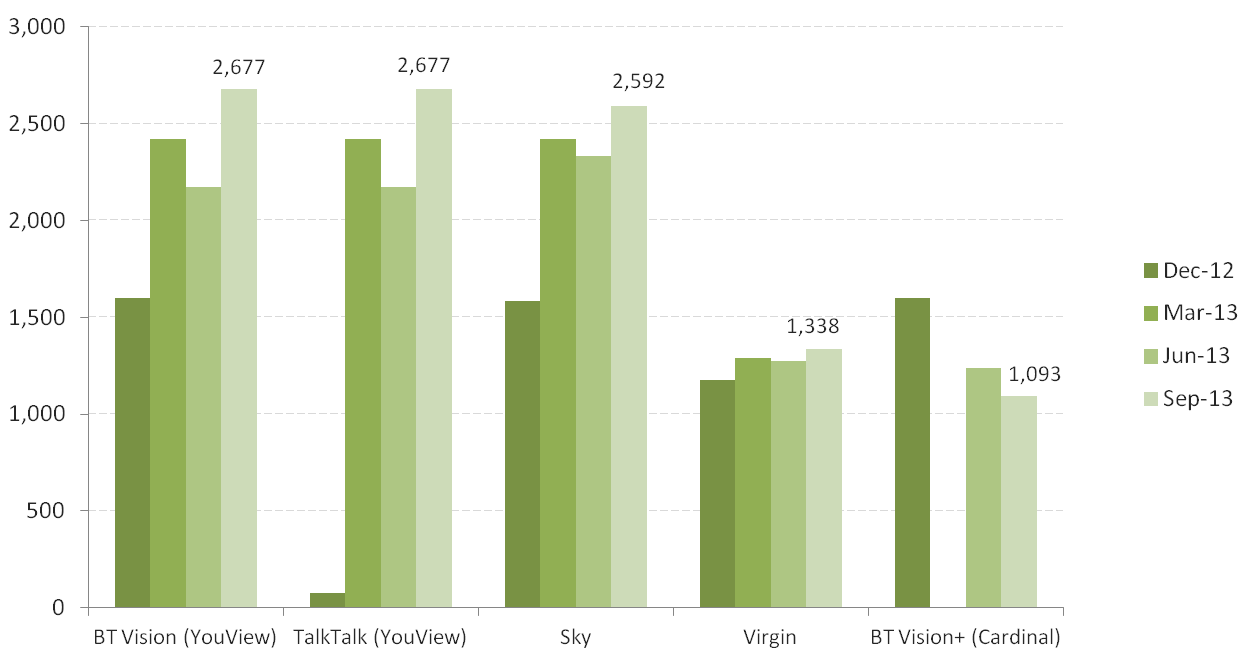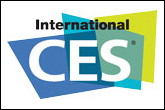 Covid lockdown over the last two years had a momentous influence on TV. The TV industry played a significant role in making lockdown, and our emergence from it, bearable for so many people. The impact of new tech, new players and new commercial models has been relentless through the period. Unlike many industries, TV is generally good at riding the storm and turning the ‘new’ to its advantage. New entrants get rapidly absorbed and become ‘old hands’ incredibly quickly, and our definition of ‘traditional TV’ expands with every new format or distribution method. We have continued to do that through the year.
Covid lockdown over the last two years had a momentous influence on TV. The TV industry played a significant role in making lockdown, and our emergence from it, bearable for so many people. The impact of new tech, new players and new commercial models has been relentless through the period. Unlike many industries, TV is generally good at riding the storm and turning the ‘new’ to its advantage. New entrants get rapidly absorbed and become ‘old hands’ incredibly quickly, and our definition of ‘traditional TV’ expands with every new format or distribution method. We have continued to do that through the year.
2022 has continued in this vein. We think that its already possible to identify those issues that will be challenging us all, and we are putting in place workstreams to address them. So this year we are expecting to focus our thinking into five areas and over the next few weeks we will expand on each of them. For now we thought we would share an outline of them with you for comment:
Changing of the Guard? – The last 12 months have been great for platform and device launches in the TV industry as we had a major new launches from the established players like Sky (with Sky Glass) and Virgin (with the new Virgin ‘Stream’ all-IP platform box) and Freeview Play (the AndroidTV PVR), as well as new services and devices from new players like Google, Roku and Amazon.
Recent developments have been notable for the way that the big tech companies began to use the power of their operating systems to shift from powering simple media players (like Chromecast) into other areas of TV distribution. Google had long ago expanded the remit of the Android TV OS into Smart TVs and this year took it back into set top boxes with Freeview Play and a range of platform boxes across Europe. This year we saw Smart TVs built by Amazon (using their FireOS software), in the UK for the first time (following last year’s launch in the US) and also SmartTVs from Roku (using their RokuOS9 software).
So far, the unit sales of these new OS devices aren’t significant so we don’t know their likely impact on users of traditional TV platforms or the likely impact on the current distribution share between them in the UK. This seems to us to be a fundamental question in UK television.
So, as well as assessing the potential impact of Virgin’s new platform on its market share, monitoring and assessing the shift of distribution share to a new cohort of players will be a key focus for Decipher in 2021. In particular, we will be watching how the regulators deal with the growth of TV platforms with interfaces that fall outside the ‘Prominence’ regulations, but have a growing offering of ‘live’ TV.
Continued Convergence – from a device perspective, the convergence of the TV industry with the phone and computing industry was a done deal a few years ago. Lockdown showed us that this convergence process is still continuing but with a new range of devices and industries. Recently, new devices like virtual assistants and audio systems, which had appeared in 2019, became mainstream in their integration with the TV industry and its device landscape. What was once a set of luxury integrations (eg ‘audio’ and ‘voice’) for high end devices ( became hygiene factor for any platform or device.
This poses two key questions for the next 12 months: firstly, how far can these existing integrations go to deliver new services and functionality. Voice control, in particular, feels like its only beginning to deliver its potential. The TV industry’s use of voice is still limited (some systems still won’t let you use voice to turn on the TV for instance). Secondly, there is a wider ‘smart home’ question of what new devices, services or industries can get pulled into TV’s orbit. New screen based innovations like Amazon’s Echo Show and Facebook’s Portal, flag up that there are still screen-based devices being invented for specific uses around our home. Services like video conferencing, utility management and CCTV are increasingly using the same devices and network connections to TV.
How these could all fit together, and whether the TV industry is a driver or passenger in the integration will become clear in 2022.
The Social Shift – After a few abortive attempts at building apps for the big screen, 2021 indicated that some of the social giants had begun to learn the lesson of what it took to succeed on TV. The apps of key social-video players like YouTube, Vevo and Twitch had already migrated up onto the big screen via Smart TVs and set top boxes. This year it has felt like content strategies were being developed to exploit this – with a growing focus on live events, sports and music being delivered on a big screen, but through a social app. If you are a gamer in particular, the arrival on TV of the massive live gaming events previously only popular in the Far East, meant your interests were represented properly on TV for the first time. As this happens we are seeing a shift in viewing share towards these social players, but also a change in the way we define them.
Last year we began to understand Netflix as a broadcast competitor not a platform. In 2022 we will be watching the social video apps make the same journey and we will be monitoring the viewing going to social apps on big screen and trying to understand the implications for traditional broadcasters. This will challenge our definition of what a ‘broadcaster’ is in 2022 – and in particular the question of how they are regulated. The PSBs are in effect now competing head to head with Netflix, Prime, Youtube and Vevo.
In 2022 we will be trying to define what a broadcaster looks like for the ‘Twenties’ and how the market and regulators should respond.
‘Addressable’ To ‘Advanced’ TV Advertising – In 2021 there was a significant focus, in advertising circles, on the growth of ‘AddressableTV’ and ‘CTV’ ad formats and buying systems. This is a natural outcome of the convergence trends discussed earlier, but Decipher like to think that this is part of a wider shift hitting TV advertising at the moment. We are now looking at the cumulative impact of a group of parallel but linked initiatives that are creating what could be described as an ‘advanced’ TV advertising culture. These initiatives include:
• The shift to addressability as data becomes further embedded in targeting and buying systems, and the potential for integrating 1st and 3rd party data more simply into delivery systems
• The acceleration of the process of automation of TV buying and the shift towards greater self-serve in these systems, prompted by the success of the systems built by the social video giants.
• The beginning of the trend for the sales of linear ads, VOD ads and ads in recorded programmes as a single TV advertising product eg Sky’s recently launched OneCampaign.
• The push to include TV measurement in new combined ‘all media’ measurement and evaluation (eg Dovetail, CFlight, Origin).
In 2022 Decipher has been reviewing the separate initiatives in these areas, but more importantly charting the cumulative impact of all the trends driving the industry towards a new ‘advanced’ state. There is a regulatory question around these shifts as well, as we increasingly question how TV advertising on social platforms needs to meet the regulatory standards required of broadcast advertising.
Commercial to e-Commerce – the last 12 months have seen an explosion in the launch of ad-free content apps from major broadcast groups, along with their integration into mainstream TV platforms. The amount of ad-free TV by available volume and number of suppliers continues to grow along with un-attributable viewing hours that need to be accounted for.
The TV industry has undergone commercial ‘shocks’ before. When BT gave away the crown jewels, rewarding broadband customers with free football and movies, it turned our notion of value in the industry on its head. When Netflix showed that it was possible to build a commercially successful content business without ads it similarly changed our perception of the industry.
However, there is a third wave of change that is arriving with the integration of Amazon into parts of the platform market. As well as ad-free and subscription content, Amazon is bringing the impact of its vast e-commerce infrastructure to the table. Unlike many TV start ups, Amazon arrived in the TV market with a fully-fledged and large scale advertising capability. It started off in the market in a place of technical maturity that has taken some platforms a decade to get to. More importantly, its ability to use free TV to reward e-commerce activity through its Prime subscription base gives it the ability to monetise investments in content through a much greater variation in revenue streams than broadcast competitor.
In the next 12 months Decipher will be exploring the changing commercial base for television in the UK and examining the impact of non-TV revenues on the industry.
We look forward to debating these issues with you over the next few weeks and we would like to hear your thoughts on whether we have missed anything you think is important.




